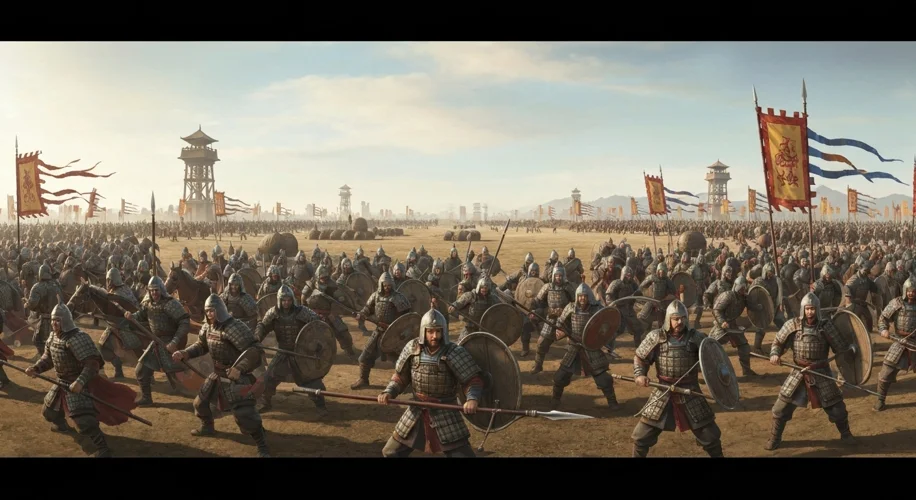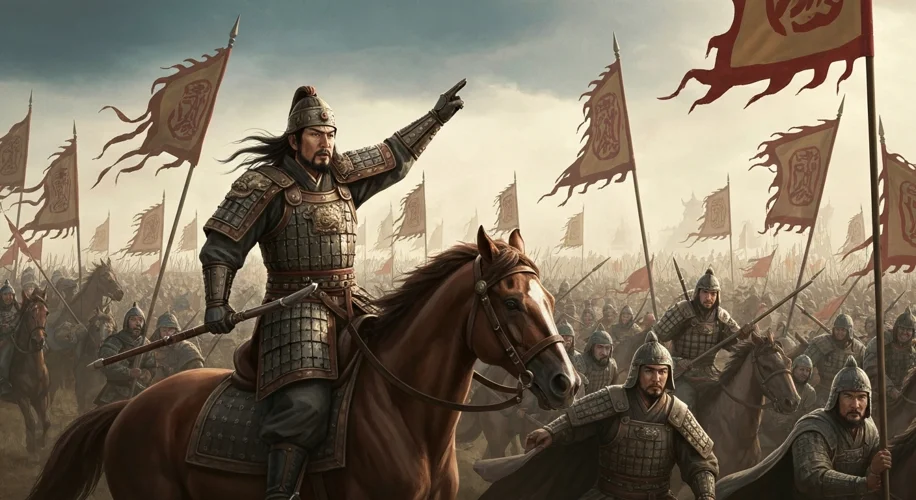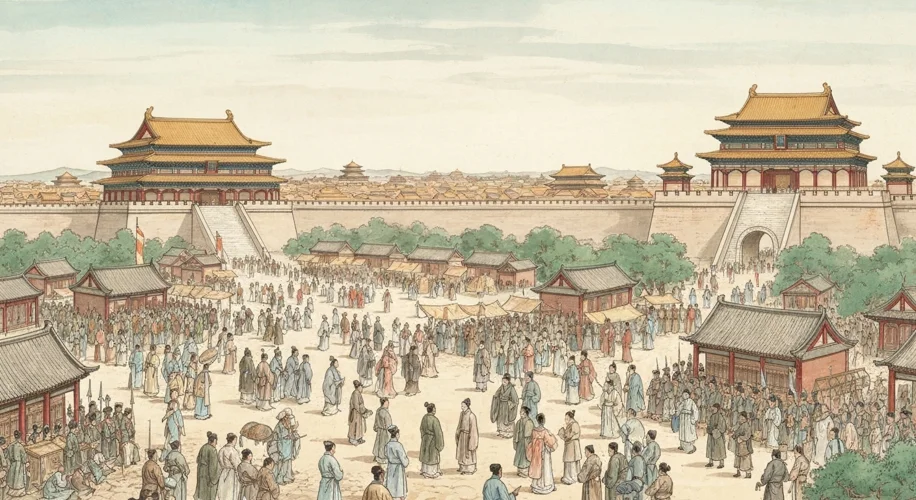The year is 618 AD. The Sui Dynasty, a tempestuous era of reunification and monumental construction, has finally collapsed under the weight of its own ambition and the cries of its weary people. From the ashes of this turbulent period emerges a new power, one that would soon cast a long shadow across Asia and beyond: the Tang Dynasty.
But what fueled this meteoric rise? What made the Tang military a force to be reckoned with, capable of forging an empire that stretched from the Pacific to the borders of the Byzantine Empire? It wasn’t just brute strength; it was an intricate tapestry of organization, innovation, and strategic brilliance that set the Tang apart.
At the heart of the Tang military machine was a sophisticated system of recruitment and organization. Gone were the days of purely conscripted peasant armies, often ill-equipped and poorly trained. The Tang implemented the Fubing system, a hereditary militia designed to provide a constant pool of trained soldiers. These soldiers, often landowners, served rotational tours of duty, maintaining their farms in between campaigns. This provided a readily available, experienced, and motivated fighting force.

However, as the dynasty matured, the Fubing system, while initially effective, began to strain under the demands of constant expansion and border defense. This led to the rise of a professional standing army, particularly along the northern frontier, where the threat from Turkic and Tibetan nomadic groups was ever-present. These professional soldiers were better paid, better equipped, and more intensely trained, forming the elite cadres of the Tang military.
The cavalry was undeniably the Tang Dynasty’s greatest asset. Influenced by their nomadic neighbors, the Tang mastered mounted warfare. Their cavalry units were highly mobile, adept at flanking maneuvers, and armed with composite bows capable of piercing enemy armor from a distance. Imagine the thunder of hooves, the whistle of arrows, and the glint of steel as Tang horsemen charged across the steppes – a terrifying spectacle for any opponent.
But the Tang were not solely reliant on cavalry. Their infantry was well-trained and equipped with a variety of weapons, including swords, spears, and crossbows. They also developed sophisticated siege warfare techniques, employing catapults and battering rams to overcome fortified cities. Their engineers were adept at constructing siege engines and devising strategies to breach enemy defenses.
The impact of this military might was profound. The Tang Dynasty expanded its territory significantly, bringing vast regions under its control. They secured the Silk Road trade routes, fostering economic prosperity and cultural exchange. Diplomatic missions and tribute envoys from across Asia flocked to the Tang capital of Chang’an, a cosmopolitan metropolis that symbolized the dynasty’s power and influence.
The military also played a crucial role in maintaining internal stability. Rebellions were swiftly and brutally suppressed, ensuring the dynasty’s longevity for centuries. The effectiveness of their campaigns against rivals like the Gokturks and Tibetan Empire cemented the Tang’s reputation as a dominant force in East Asia.
One key figure embodying this military prowess was General Guo Ziyi. During the An Lushan Rebellion, a cataclysmic event that nearly toppled the dynasty, Guo Ziyi emerged as a brilliant strategist and inspiring leader. He masterfully coordinated diverse forces, including Tang regulars, allied Uyghur cavalry, and local militias, to quell the widespread revolt. His campaigns were not just about military victories; they were about restoring order and preserving the Tang legacy.

The Tang military wasn’t static; it evolved. Early in the dynasty, the focus was on a militia system. Later, with the growth of the empire and increasing external threats, a professional army became paramount. This adaptability was a hallmark of their success. They learned from their enemies, incorporating new tactics and technologies. The development of improved armor, more effective siege weaponry, and sophisticated logistical support all contributed to their dominance.
Ultimately, the military might of the Tang Dynasty was not just about legions and battles. It was a reflection of a well-organized state, a society that valued military service, and a leadership that understood the importance of a strong defense to support its expansive vision. Their legacy is etched not only in the vast territory they controlled but also in the enduring cultural and political influence they exerted, a testament to the power of a disciplined and adaptable fighting force.
Even as the dynasty eventually waned, the foundations laid by its military strength continued to shape the region for centuries to come. The Dragon’s Reach extended far beyond the battlefield, defining an era of unprecedented power and cultural florescence in Chinese history.

